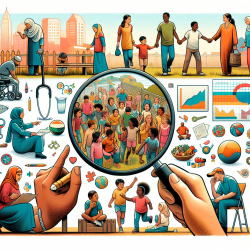As practitioners dedicated to fostering optimal outcomes for children, it's essential to stay informed about the latest research. One significant study, "Emotion Understanding in Bilingual Preschoolers," provides valuable insights that can help us refine our approaches to therapy, particularly in multicultural and bilingual settings. This blog will explore the key findings of the study and suggest ways to implement these insights in practice.
Understanding the Study
The study, conducted by Bukhalenkova et al. (2022), investigated the emotion understanding of bilingual and monolingual preschoolers in Russia. The researchers assessed 593 children aged 5-6 using the Russian version of the Test of Emotion Comprehension (TEC). The TEC evaluates three components of emotion understanding:
- External causes of emotions
- Reflective causes of emotions
- Mental causes of emotions
Interestingly, the study found no significant differences between bilingual and monolingual children in overall emotion understanding or in understanding external and reflective causes of emotions. However, monolingual children demonstrated a slightly better understanding of mental causes of emotions.
Key Findings
The study's findings suggest several important points:
- Bilingual children may require more time and/or exposure to language and culture to master the understanding of mental causes of emotions.
- The understanding of emotions is influenced by non-verbal intelligence and age, with older children and those with higher non-verbal intelligence performing better.
- There are no significant gender differences in emotion understanding.
Implications for Practitioners
Based on these findings, here are some data-driven recommendations for practitioners working with bilingual preschoolers:
- Provide Culturally Relevant Contexts: Incorporate cultural norms and values into therapy sessions to help bilingual children understand emotions within their specific cultural contexts.
- Focus on Mental Causes of Emotions: Pay extra attention to activities and discussions that help children understand mental causes of emotions, such as beliefs and memories, which might be more challenging for bilingual children.
- Enhance Language Exposure: Create opportunities for bilingual children to engage in activities that involve both languages, thereby increasing their exposure and proficiency in both.
- Use Non-Verbal Cues: Since non-verbal intelligence plays a role in emotion understanding, incorporate activities that enhance non-verbal communication skills, such as facial expression recognition and body language interpretation.
Encouraging Further Research
While this study provides valuable insights, it also highlights the need for further research. Future studies should explore:
- The impact of different types of bilingualism and varying levels of language proficiency on emotion understanding.
- Longitudinal effects of bilingualism on emotional development over time.
- Interventions specifically designed to enhance emotion understanding in bilingual children.
To read the original research paper, please follow this link:
Emotion Understanding in Bilingual Preschoolers.










